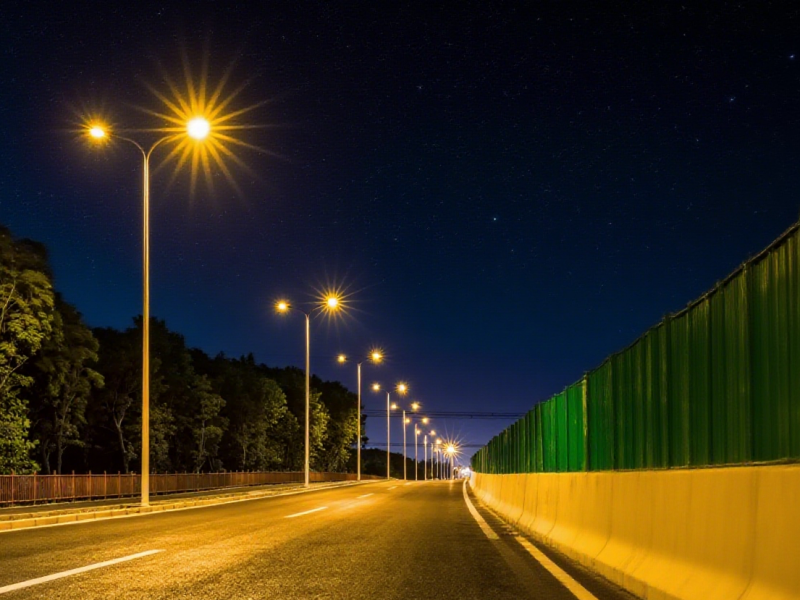Today, outdoor lighting expert Tianxiang shares some lighting regulations about LED street lights and high mast lights. Let’s take a look.
Ⅰ. Lighting Methods
Roadway lighting design should be based on the characteristics of the road and location, as well as the lighting requirements, using either conventional lighting or high-pole lighting. Conventional lighting fixture arrangements can be categorized as single-sided, staggered, symmetrical, centrally symmetrical, and horizontally suspended.
When using conventional lighting, the selection should be based on the road’s cross-sectional form, width, and lighting requirements. The following requirements must be met: the cantilever length of the fixture should not exceed 1/4 of the installation height, and the elevation angle should not exceed 15°.
When using high-pole lighting, the fixtures, their arrangement, pole mounting position, height, spacing, and the direction of maximum light intensity should meet the following requirements:
1. Planar symmetry, radial symmetry, and asymmetry are three lighting configurations that can be selected based on different conditions. High-mast lights located around wide roads and large areas should be arranged in a planarly symmetrical configuration. High-mast lights located within areas or at intersections with compact lane layouts should be arranged in a radially symmetrical configuration. High-mast lights located at multi-story, large intersections or intersections with dispersed lane layouts should be arranged asymmetrically.
2. Light poles must not be located in hazardous locations or where maintenance would severely obstruct traffic.
3. The angle between the direction of maximum light intensity and the vertical should not exceed 65°.
4. High mast lights installed in urban areas should be coordinated with the environment while meeting lighting functional requirements.
Ⅱ. Lighting Installation
1. The lighting level at intersections should comply with the standard values for intersection lighting, and the average illuminance within 5 meters of the intersection should not be less than 1/2 of the average illuminance at the intersection.
2. Intersections may use light sources with different color schemes, lamps with different shapes, different mounting heights, or different lighting arrangements than those used on the adjacent roads.
3. The lighting fixtures at the intersection can be arranged on one side, staggered or symmetrically according to the specific conditions of the road. Additional light poles and lamps can be installed at large intersections, and glare should be limited. When there is a large traffic island, lights can be installed on the island, or high pole lighting can be used.
4. T-shaped intersections should have lamps installed at the end of the road.
5. The lighting of roundabouts should fully show the roundabout, traffic island, and curb. When conventional lighting is used, the lamps should be installed on the outside of the roundabout. When the diameter of the roundabout is large, high pole lights can be installed on the roundabout, and the lamps and lamp pole positions should be selected based on the principle that the brightness of the roadway is higher than that of the roundabout.
6. Curved sections
(1) The lighting of curved sections with a radius of 1 km or more can be handled as straight sections.
(2) For curved sections with a radius of less than 1 km, lamps should be arranged along the outside of the curve, and the spacing between lamps should be reduced. The spacing should be 50% to 70% of the spacing between lamps on straight sections. The smaller the radius, the smaller the spacing should be. The length of the overhang should also be shortened accordingly. On curved sections, lamps should be fixed on one side. When there is a visual obstruction, additional lamps can be added on the outside of the curve.
(3) When the road surface of the curved section is wide and lamps need to be arranged on both sides, a symmetrical arrangement should be adopted.
(4) Lamps at the bends should not be installed on the extension line of the lamps on the straight section.
(5) Lamps installed at sharp bends should provide sufficient lighting for vehicles, curbs, guardrails, and adjacent areas.
(6) When lighting is installed on ramps, the symmetric plane of the light distribution of the lamps in the direction parallel to the road axis should be perpendicular to the road surface. Within the range of convex vertical curved ramps, the installation spacing of lamps should be reduced, and light-cutting lamps should be used.
Outdoor lighting expert Tianxiang’s sharing today comes to an end. If you need anything, please don’t hesitate to contact us to discuss it further.
Post time: Sep-03-2025





